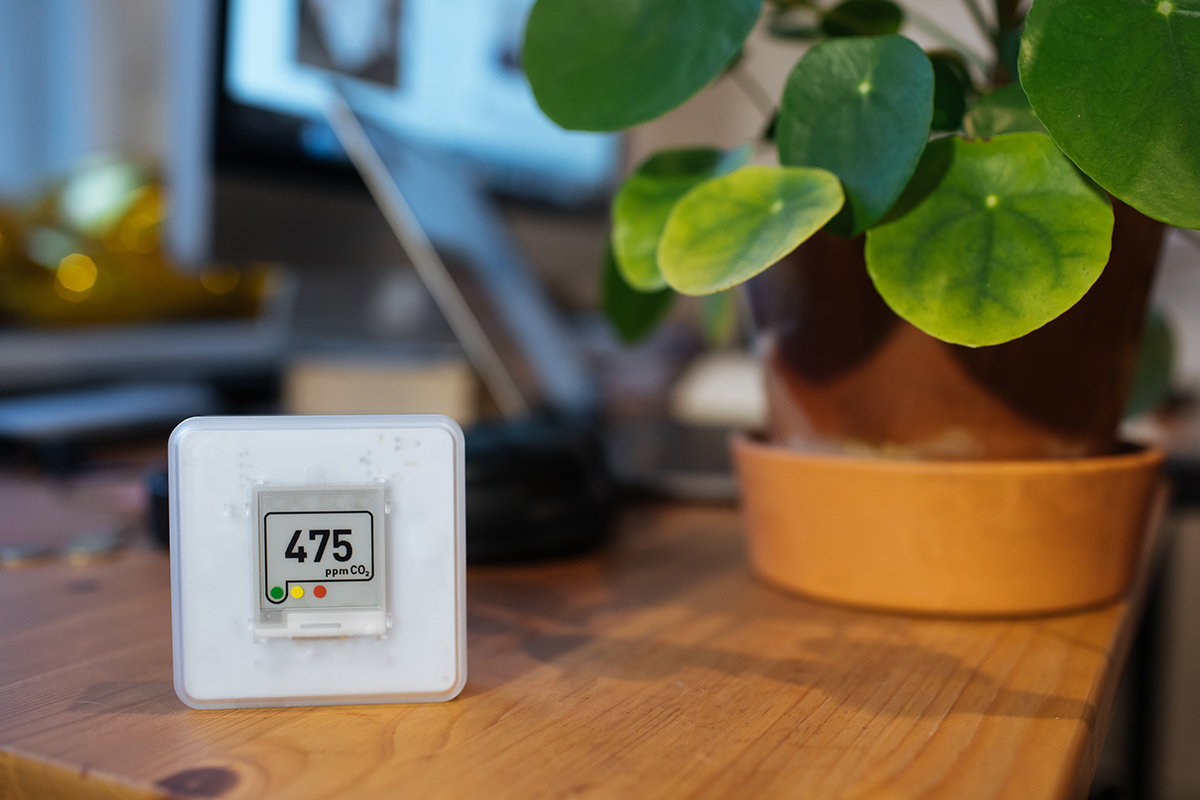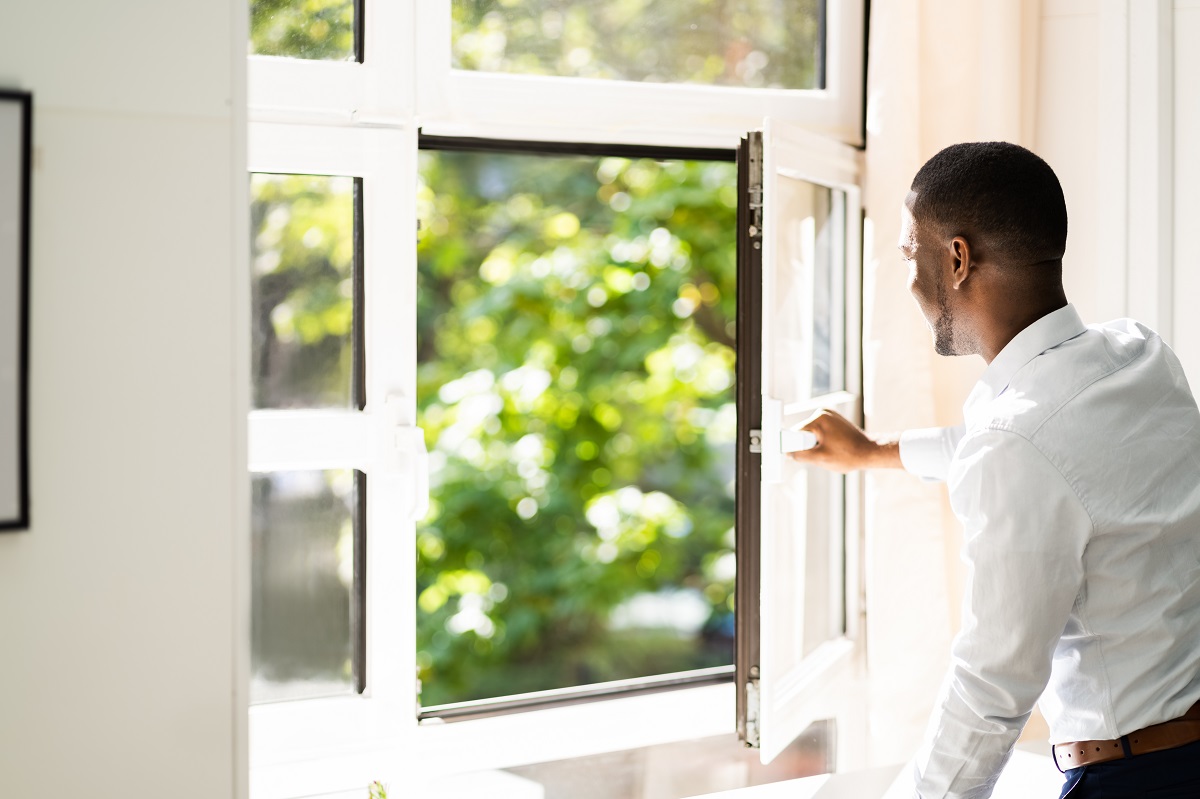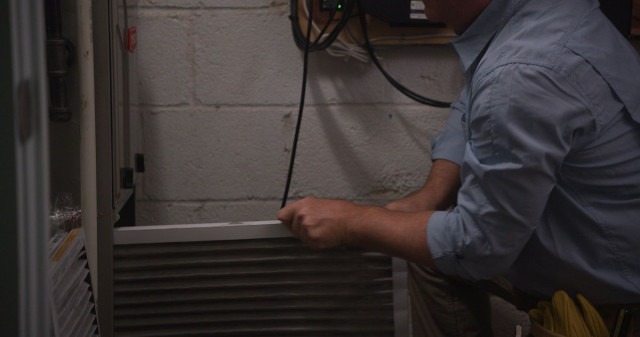Americans generally spend 90 percent of their time indoors, where pollutants can be as much as five times higher than the great outdoors. Carpeting has volatile organic compounds that give off a gas, and even your shower curtain has hazardous air pollutants. Your home may also have radon and carbon monoxide, and both are dangerous to your health.
Keep your indoor living environment healthy and your air fresh with these simple indoor air quality tips!
#1 – Find out how healthy (or unhealthy) your indoor air quality is
Before you can start improving your indoor air quality, you need to know the exact status of your indoor air. Consider investing in an air quality monitor.

Some smart options will test the air quality in your home and then turn on your air purifier or ventilation systems. Other options simply monitor the pollutants in your air, so you’ll know when to address an issue.
#2 – Bring the fresh air inside

If you’ve been keeping your home shut tight, chemicals and allergens can build up and threaten your health and home. One of the easiest ways to improve air quality in your home naturally is to open your windows and doors and use ceiling or box fans to create a draft.
For the best outdoor air quality, open your windows and doors before 10 a.m. and after 9 p.m., when the air is less polluted. (Open windows can welcome pests and intruders into your home, too, so install screens and always shut and lock your exits before going to sleep.) If you can only open your windows between 10 a.m. and 9 p.m., you should. Generally, the indoor air pollution in your home is worse than the pollution outside.
#3 – Limit the moisture in your home
Humidity can be the scourge of your house, resulting in stagnant air and mold growth. Always turn on your bathroom exhaust fan for at least fifteen minutes after you shower to prevent mold from growing, and if possible, open a window. (Your fan should vent to the outside, not blow into your attic or crawlspace, or you’ll have even more mold and mildew problems).

Also, turn on your kitchen exhaust fan when cooking as steaming and boiling can create moisture. Plus, a natural gas or propane stove can generate carbon monoxide, formaldehyde, and other toxic pollutants. If you don’t have an exhaust fan, open doors and windows when able.
If you have extreme humidity levels in your home, you may need to use dehumidifiers.
#4 – Be mindful of the chemicals in your home

Household products within your living environment can increase the pollution levels of your house and create poor indoor air quality. These items include cleaning supplies, paints, tobacco smoke, glue and other home improvement products, and certain cosmetic products.
When using these items, follow the label instructions carefully, and throw away old or unneeded chemicals safely. Also, buy limited quantities, so you don’t have excess chemicals that will need to be stored.
#5 – Monitor for deadly gases
Radon is a radioactive gas that is odorless and colorless, which can lead to adverse health effects or even death. Unfortunately, you won’t know your home has it without testing, so make sure you do.
You should also continuously monitor carbon monoxide in your home, which kills more than 400 Americans and sends more than 20,000 to the emergency room each year. Place a carbon monoxide detector on each level of your home and check them alongside your smoke alarms on the first Saturday of each month.
#6 – Keep up with routine HVAC maintenance
Routine HVAC maintenance can help to improve air quality, especially in old homes. Simply replace or clean your air filters as per the manufacturer instructions. Some units require homeowners change their air filters every three months, others every six months. Some even need to be changed every month, so check with the manufacturer or a qualified professional to know when this task needs to be done for your specific unit.
Also, make sure your air filters fit. If your air filter is too small for the unit, it won’t capture allergens, dust mites, pet dander, or other pollutants. (It can also be sucked into your unit, which could cause costly damage.) Buy the correct filter and replace or clean as needed. This will not just improve your indoor air quality but will also prolong the life of the unit and lower your energy bills.
#7 – Upgrade your HVAC’s air filter

If you have a budget for home improvement, consider installing a pleated air filter. These are measured in MERV (Minimum Efficiency Reporting Value) or how much particulate matter they capture. They are also thicker than the normal air filters in a HVAC unit.
They range on a scale from one to 20, though you should strive to get a filter with a MERV rating between 11 and 13 if you want superior air quality. Anything over nine is used in hospital laboratories and anything over 13 captures bacteria, smoke, other pollutants, and droplets from sneezing.
You can also consider a separate air purifier, but to get a good one, you’ll need to spend a few hundred dollars. An air purifier will also raise your home’s energy consumption and can be noisy.
#8 – Complete annual weatherization
While installing storm windows, weather stripping, and blown-in wall installation can prevent polluted air from escaping your home and fresh air from getting in, it’s important to weatherize to keep your home energy efficient. Just make sure to get adequate air flow through the above methods and check for moisture issues. If you find mold and mildew growth, you shouldn’t weatherize your home until you’ve fixed these issues.
FMI: FOR THE WAY YOU LIVE
When you’re a Franklin Mutual Insurance policyholder, you can count on the peace of mind that only comes from knowing that someone’s got your back. We’re proud to provide more coverage, with less exclusions—with customized policies that are designed for the way you live.
FMI content is powered by vipHomeLink